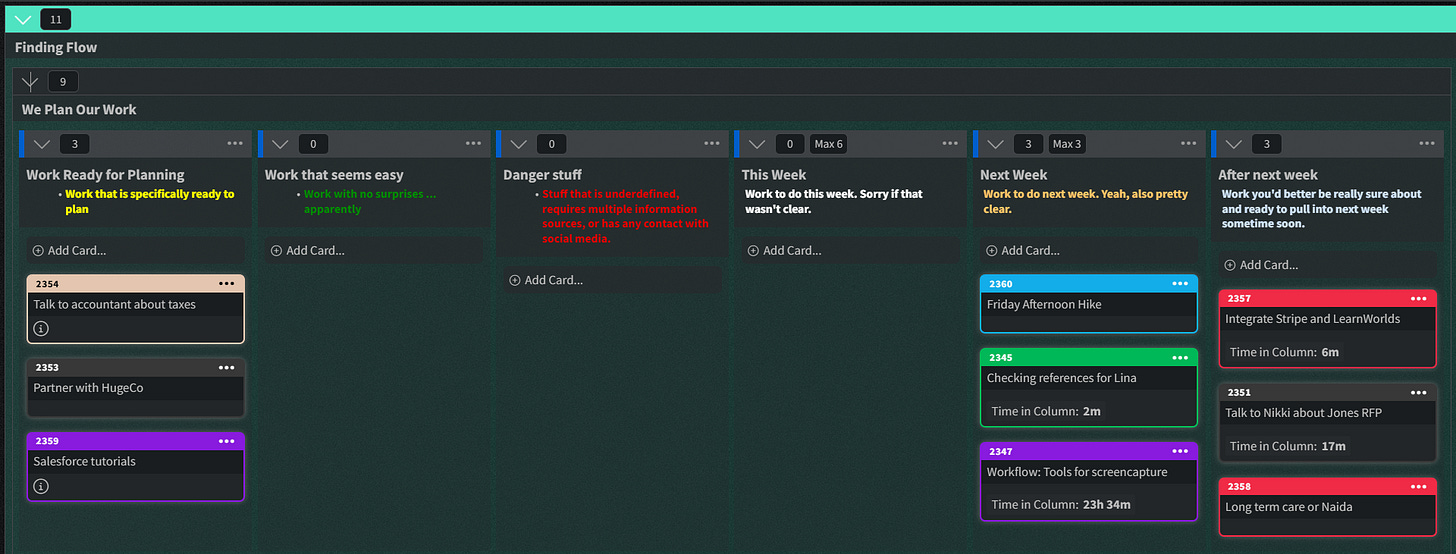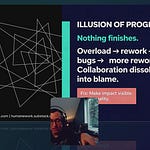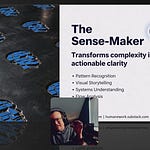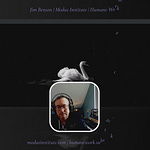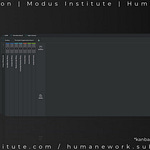Personal Kanban Class | PK Book | Modus Institute | Our Calendar
Why Stress Exists—And What It’s Telling You
Stress is a signal. It’s your brain telling you that how you are working is broken. When you don’t know what to do next, when work arrives undefined, when people aren’t available, when tasks are un-completable, when you’re forced to do work that obviously doesn’t need doing, when you are in more meetings than production, when you face toxicity and aggression…all of these create stress. They are drag, they are bottlenecks, they are a pain.
Work should arrive defined and completable. If it doesn’t, you should have a system to explore, define and complete it. If there’s complexity, you should have a way to handle that complexity. That’s what flow is: not smooth, but predictable. Your river might have rapids and whirlpools, but you know the lay of the land. You understand how work moves through the system. When things are unexpected (truly unexpected, not just unplanned) that creates drag. That’s when you lose the ability to focus and finish.
So how do you visualize stress? How do you define flow, identify drag, and actually do something about it? You build a board that makes the invisible visible.
Stress Is a Breakdown in How You Work
Here’s what research tells us: Stress isn’t about working hard, working hard can be pretty fun actually, but stress is more about working blind. When you can’t predict what’s coming, when you can’t control your inputs, when feedback is absent or delayed, your brain enters a state of chronic vigilance. You’re always on alert, never at rest.
When you make work visible, categorize it by difficulty, and establish clear time horizons, you restore predictability. You create “perceived control”, the feeling (in this case actually built into the board) that you have agency over your work. Perceived control is one of the strongest predictors of reduced stress and increased performance.
Flow requires three things: clear goals, immediate feedback, and a balance between challenge and skill. Today’s Kanban board gives you all three. It shows you what’s next (clear goals), where things are stuck (immediate feedback), and which work is easy versus difficult (challenge/skill balance).
Seeing, Finding, and Maintaining Flow
The “Finding Flow” board is a commitment device. It makes promises visible, converts vague intent into structured action, and turns surprises into manageable challenges.
Today’s board has three planning horizons: This Week, Next Week, After Next Week. Before that, work sits in “Ready for Planning,” where teams categorize tasks as Easy (fully defined, no surprises) or Difficult (complex, politically sensitive, requires unavailable people). From there, work flows through What (re-defining the work), Doing (solo), Collaborating (paired/team focus), Review, and finally the Afterburner (continuous improvement). See the video for a lot more detail.
Three Core Themes
Theme 1: Plan Before You Pull
You can’t just grab work and start. That’s how you get blindsided by your own blindness. Before pulling anything into Doing, teams gather and plan collaboratively. They look at upcoming work and ask:
Is this fully defined? (Easy)
Or will there be surprises? (Difficult)
Knowing up front that a task is Difficult means you pay more attention to it. You schedule extra time, involve the right people early, and don’t assume it’ll “just work out.” This categorization is about understanding what you’re getting into.
Then, you set time horizons: This Week, Next Week, After Next Week. Why three buckets? Because people need to know when you’ll deliver. “Sometime in the next few weeks” creates anxiety and constant unnecessary check-ins. Unnecessary check-ins are more work. But when you say, “This is happening next week,” people relax and leave you alone to work. Setting expectations is important. Keeping them means people will trust you in the future.
WIP limits apply here too: maybe you only do two Difficult things per week, filling the rest with Easy work. That’s sustainable. That’s realistic. That’s how you avoid overload before it starts.
Theme 2: Define in the Flow, Not Just at the Start
Here’s where most teams screw up: they plan once, then assume the plan is perfect. But the moment you stop planning, you start drifting and drift becomes the plan.
So the board has a What column, a space to define work mid-flow. You pull a task, realize it’s not as clear as you thought, and move it to What to figure it out. Maybe it’s an “Easy” task that turned out to be complex. Maybe it’s a Difficult task that needs decomposition. Either way, you pause to plan again before continuing.
This isn’t failure, it’s adaptive intelligence. Real work is messy. The goal isn’t to eliminate surprises; it’s to have a system for handling them when they appear.
Theme 3: Collaboration Creates Concentration Bubbles
Solo work is interruptible. Collaborative work is not. When you work alone, anyone can Slack you, tap your shoulder, pull you into a meeting. But when you’re collaborating, truly focused with another person or team, you’re in a concentration bubble. Interruptions drop. Focus intensifies. Work accelerates.
That’s why the board has separate columns for Doing (solo) and Collaborating. It signals to others: “These people are unavailable right now becuse they’re deep in shared focus.” It also reminds you to protect that time. Collaboration isn’t just “working together” it’s structured, uninterrupted co-creation.
And when work moves to Review, it’s clear: someone else has the ball. You’re waiting, not stuck. That visibility prevents the anxiety of “Did I forget something?” and the endless “Where’s my thing?” requests.
Individual Value: Reduce Your Stress by Making Promises Visible
Categorize before you commit: Is this Easy or Difficult? Knowing up front protects you from surprise stress.
Use time horizons to set boundaries: “I’ll get to this next week” is a promise—and it stops the daily “Is it done yet?” interruptions.
Move to What when needed: Don’t power through confusion. Pause, define, then proceed. Clarity reduces stress more than speed.
Build Trust: Make promises you can keep and people will know you can keep your promises.
Project Manager: Build Predictability Into the System
Facilitate collaborative planning: Don’t let individuals plan alone. Bring the team together to identify Easy vs. Difficult work and set realistic time horizons.
Enforce WIP limits on Difficult work: Cap how many complex tasks the team takes on per week. Overloading Difficult work is a recipe for burnout.
Use the Afterburner religiously: Every completed task gets a 60-second retro: What went well? What slowed us down? What will we do differently? Patterns emerge. Systems improve.
Leadership: Flow Is Money, Flow Is Retention, Flow Is Strategy
Measure predictability, not just velocity: Can teams forecast when work will finish? That’s the real metric of health.
Protect collaboration time: If your best work happens in Collaborating, then interruptions during collaboration are theft. Design systems that respect focus.
Celebrate continuous improvement: Every Afterburner insight that becomes a process change is ROI. Flow improvements compound.
Conclusion
Stress is a signal that the system is broken. Visualization is how you fix it. When you plan work collaboratively, categorize by difficulty, set time horizons, and continuously improve through retrospectives, you design stress out of the system.
Next Episode: We’ll make the business case for humane work—why companies that invest in flow and reduce stress outperform those that glorify burnout.


